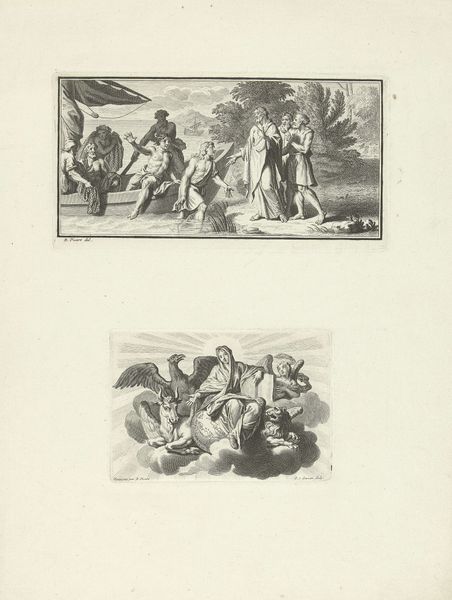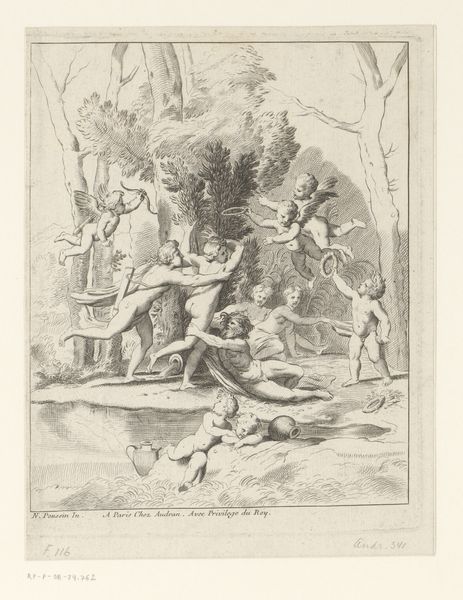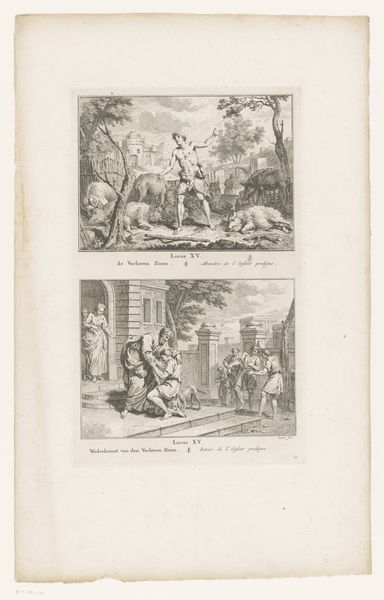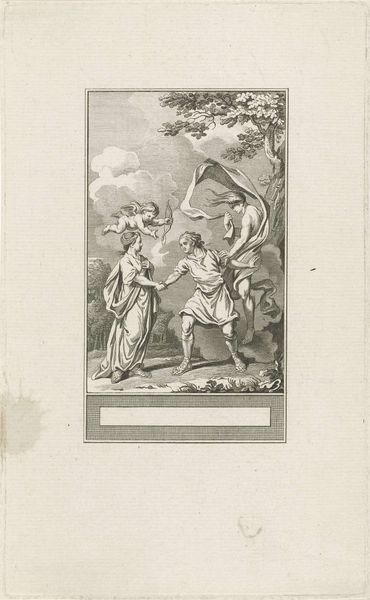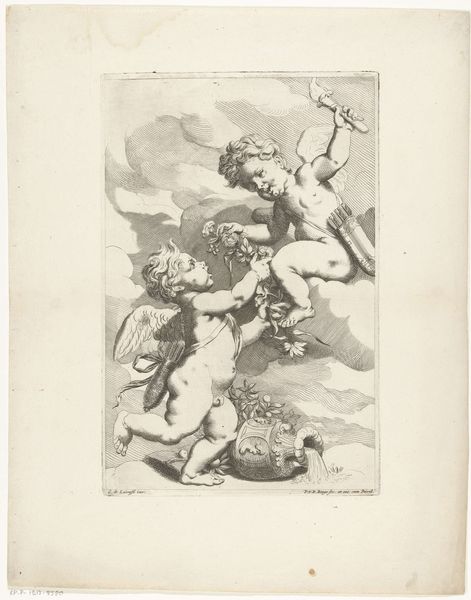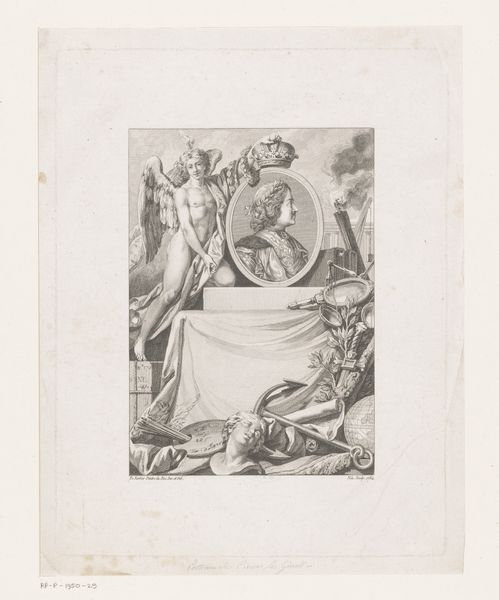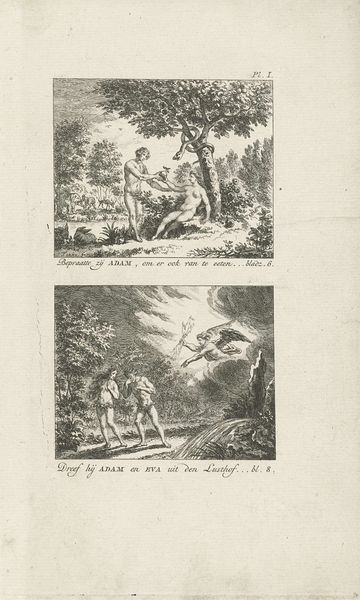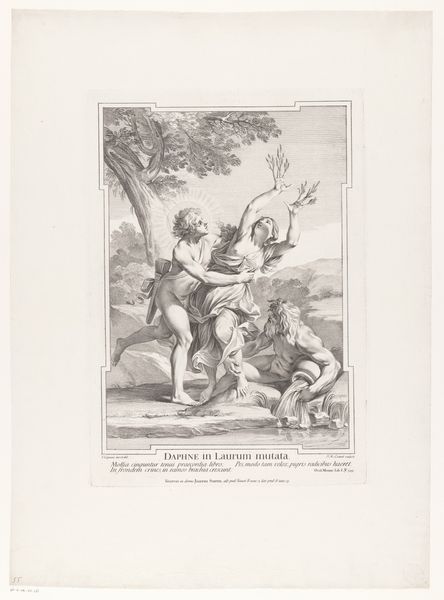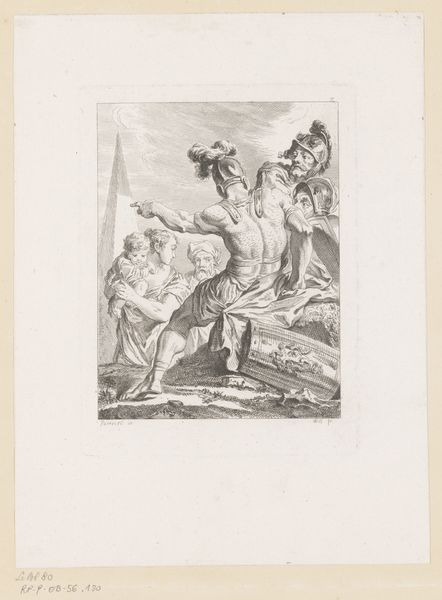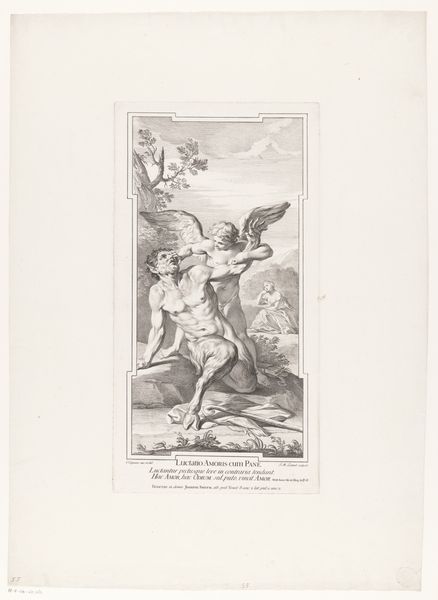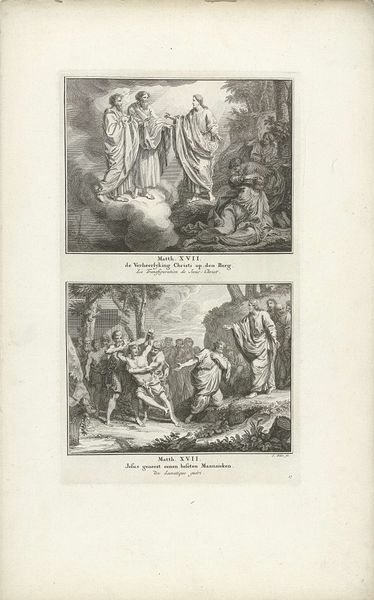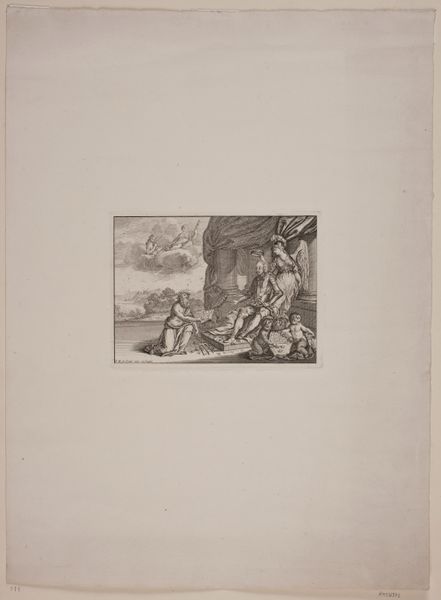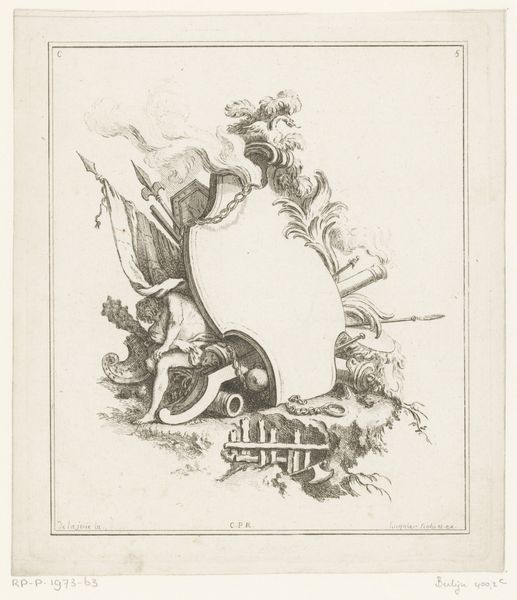
drawing, print, engraving
#
drawing
#
baroque
# print
#
landscape
#
figuration
#
history-painting
#
engraving
Dimensions: height 265 mm, width 175 mm
Copyright: Rijks Museum: Open Domain
Curator: I’m completely swept away by the raw, almost tactile feel of this engraving. The details of the landscape, the softness of the children... it almost hums with life despite being rendered simply in line. It’s gorgeous! Editor: This engraving is titled “Studieblad met een ruïnelandschap en een kind met een duif,” or, Study Sheet with a Landscape in Ruins and a Child with a Dove. It’s by Pieter van den Berge, dating back to 1695, placing it squarely in the Baroque period. The Rijksmuseum is its home now. Curator: "Ruins and children"... heavy, right? But also kinda comforting in a strange way. Editor: That juxtaposition is quite characteristic of Baroque art, exploring themes of grandeur alongside human vulnerability and the passage of time. We often see a celebration of splendor with an equal acknowledgment of decay and mortality. Curator: I’d never thought of it that way before but seeing how it's positioned above the landscape gives off this vibe, a weird balance of birth, life, death. Like the cycle itself is the point, almost a bit zen? Editor: Yes, and the positioning of such study sheets and prints was important at the time. Disseminating knowledge of art, architectural styles, and allegorical themes allowed for a broader cultural understanding, crucial for maintaining and propagating Baroque ideals in a society undergoing significant changes. Curator: Thinking about where it sat and now seeing it, the distance of time makes you think, doesn't it? Editor: Precisely! The crumbling columns paired with the tender image of a child and dove speaks to the ephemeral nature of power and the enduring power of innocence, recurring meditations in art history, don't you think? Curator: It makes me feel both intensely melancholic and weirdly hopeful... it's all a bit dreamlike. All I know is, I want to crawl into it, ruins and all. Editor: Art provides a poignant commentary on the human experience by juxtaposing grandeur with the stark reality of time, change, and societal transformations. These prints in particular allowed for wider circulation of those concepts during an interesting period.
Comments
No comments
Be the first to comment and join the conversation on the ultimate creative platform.

